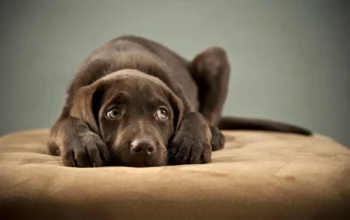In a big house, odor spreads out. In an apartment, it sits with you.
• You can’t hide litter boxes far away
• Trash bins fill up quickly
• Airflow is limited
• Neighbors may complain
• One cleaning mistake affects the entire space
But here’s something you might not have considered. Small spaces actually give you more control because everything is contained. If you build the right routine, the freshness becomes consistent.
Where you might be missing a piece is in thinking that you must do more cleaning. What you actually need is better systems.
1. Choosing the Right Waste Disposal Setup
This is where everything starts to get easier or harder. Most people pick random solutions without matching them to their actual space and pet habits.
Let’s check the key factors.
A. Covered vs Uncovered Litter Boxes (for cats)
People assume covered boxes solve odor. Not always. Covered boxes trap heat, making smell build faster. If your apartment has poor airflow, uncovered might be better.
But if you hate visual clutter, covered wins.
Your best angle? Get a box with a charcoal filter. It handles odor without heat buildup.
B. Small Space Dog Waste Solutions
If your dog has to go indoors sometimes, you have three main routes:
-
Artificial grass pads
-
Pee pads
-
Indoor dog litter box (yes, these exist)
Grass pads feel more natural but require more washing. Pee pads are easier but create more trash. Dog litter boxes are cleaner but need training.
Here’s a question most people never ask themselves:
Which option fits your reaction time?
Because odor only builds when waste sits longer than it should.
C. Dedicated Waste Bin
This is non negotiable. Household bins mix odors. Pet waste needs its own sealed container.
Look for:
• Tight locking lid
• Carbon filter
• Foot pedal
• Easy liner replacement
Don’t skip this. A dedicated small bin saves your kitchen from smelling like a public park.
2. Odor Control Techniques That Actually Work
Let’s be honest. Odor is the real villain. And small spaces don’t forgive sloppy odor control.
Here’s what works, stripped of myths.
A. Baking Soda Isn’t Enough
People sprinkle baking soda like magic dust. It helps, but it only neutralizes certain smells. For ammonia-heavy urine, it struggles.
Combine it with:
• Zeolite crystals
• Charcoal bags
• Enzyme spray
Enzyme sprays break down biological odors at the root.
B. Ventilation Strategy
Since small apartments often lack airflow, you need to force circulation.
Try these:
• Open windows 20 minutes daily
• Place litter box near airflow path
• Add a mini fan pointing outward to push smells out
• Use an air purifier with a carbon filter
Air purifiers are underrated. They don’t mask odor. They remove it.
C. Cat Litter That Actually Works in Tight Homes
Clay litter is cheap but dusty and smelly.
In small spaces you’re better off with:
• Pine pellets
• Silica gel crystals
• Mixed litter blends
They reduce smell dramatically.
Have you assumed clay is the “normal” option because it’s cheaper? Try switching for one month and watch how your apartment feels different.
3. Cleaning Routines That Fit Small Spaces
A mistake people make is thinking weekend cleaning is enough. In a small home, daily touches matter more than heavy weekly cleans.
Here’s a simple, realistic system:
Daily Tasks
• Scoop litter or pick up dog waste
• Spray the area with enzyme cleaner
• Tie up waste and drop in dedicated bin
• Wipe floors around the waste area
This takes five minutes. But the difference? Huge.
Every 2–3 Days
• Replace pee pads
• Wash artificial grass pads
• Rotate charcoal filters
• Change bin liners
Weekly Deep Cleaning
• Wash litter box with warm soapy water
• Clean pet potty trays
• Scrub floor area with disinfectant
• Refresh air purifier filter
• Mop with odor neutralizing cleaner
Small spaces need consistency, not intensity.
Let me push your thinking here. Are you cleaning based on a schedule, or based on when the smell hits you? Because by the time you smell it, you’re already late.
4. Smart Litter Box Placement for Tiny Apartments
People often put the litter box wherever there’s leftover space. But placement is strategic.
Avoid these spots:
• Right beside the kitchen
• Close to the bed
• Near the door (odor hits guests first)
• In poorly ventilated corners
Better choices:
• Bathroom
• Laundry area
• Balcony
• Under the sink (if large enough)
• Behind furniture with airflow
Think beyond hiding it. Think “where can odor escape easily?”
5. Managing Dog Waste in Small Outdoor Spaces
Courtyards, balconies, or small compounds require planning.
A. Use a Portable Dog Waste Composter
You bury it in the ground and let enzymes break down poop naturally.
Important reminder:
Never use pet waste compost for edible plants.
B. Grass Patch + Tray System
Place synthetic grass over a drainage tray. Rinse daily. Squeeze out water. Sun dry.
It’s clean and looks neat.
C. Waste Bag Dispensers
Mount one near the door or balcony so you never forget.
Convenience makes consistency happen.
6. Space-Saving Storage for Pet Waste Supplies
You’d be shocked how much easier small-space living becomes when everything has a home.
Store in small bins or shelves:
• Extra pee pads
• Cleaning sprays
• Gloves
• Spare liners
• Scoopers
• Enzyme bottles
• Disposal bags
Use vertical storage. Wall hooks. Behind-the-door organizers. Mini shelves.
You don’t need more space. You need smarter arrangement.
7. Dealing With Multi-Pet Waste Systems in Tight Homes
Two pets mean double the waste but not double the space.
A. Each Pet Needs Its Own Station
Cats want separate boxes
Dogs want separate pads
This cuts down mess, conflict, and smell
B. Monitor the “bully factor”
Some pets block others from access. You might think your pet is “lazy” but it may be a territorial issue.
C. Sync Their Cleaning Cycles
Handling everything at once helps you stay consistent.
Here’s a question worth thinking about. Are you assuming both pets can share the same setup because it seems convenient? In reality, that convenience creates more stress and odor.
8. Tools That Make Life Easier in Small Spaces
You don’t need fancy gadgets. You just need the right ones.
• Enzyme-based cleaners
• Clumping litter
• Stainless steel litter scooper
• Sealed waste bin
• Air purifier
• Washable pee pads
• Rubber gloves
• Odor neutralizing candles (pet safe only)
• Mini handheld vacuum
These tools aren’t luxuries. They’re time savers.
9. How to Keep Your Small Space Smelling Fresh Long-Term
This is where a lot of people fall off. They clean for a week then slowly slip.
Try this formula:
-
Scoop or pick up immediately
-
Disinfect lightly
-
Deep clean weekly
-
Ventilate every day
-
Replace odor control media monthly
Small efforts done consistently beat random intense efforts.
And don’t underestimate scent layering. A clean home with no odor still feels incomplete. Add subtle pet-safe fragrances like:
• Lavender
• Chamomile
• Coconut
• Vanilla
• Bamboo fresheners
They don’t hide bad smells. They enhance the clean feel.
10. Mistakes That Make Small Spaces Smell Worse
Here’s where many people sabotage themselves.
• Letting waste sit “just a bit too long”
• Using cheap plastic litter boxes that retain odor
• Reusing bags
• Using scented litter that irritates pets
• Cleaning with strong bleach (traps ammonia smell)
• Ignoring hidden spills
Sometimes you think you’re cleaning well but you’re using the wrong method.
Are you sure your cleaning choices match your actual pet behavior? Or are you following general advice that doesn’t apply to your pets at all?
Final Thoughts
Pet waste management in small spaces isn’t about working harder. It’s about working smarter. When you understand your pet’s habits, build a routine that fits your lifestyle, and equip your home with simple, efficient tools, everything becomes easier. Your apartment smells fresher. Cleaning feels lighter. And you stop feeling overwhelmed by the little messes pets bring.
Now let me throw this back to you.
What’s the biggest challenge you face right now — odor, space, or consistency? And which solution here feels like the one you want to test first?



